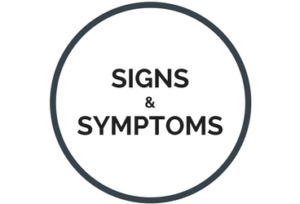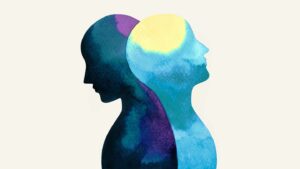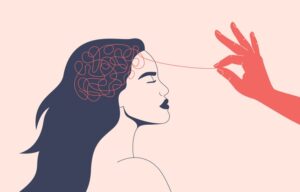Did you know that there is more than one type of bipolar disorder? In this blog post, we will discuss bipolar type 3- also known as a cyclothymic disorder. Cyclothymic disorder is a chronic mental illness that causes mood swings that alternate between high and low extremes. This can be very disruptive to your life, and it is important to seek treatment if you think that you may have this condition. Keep reading for more information about bipolar disorder type 3!
Contents
What Is Bipolar Type 3?
Bipolar type 3 is basically when someone has both manic and depressive episodes but also mixed episodes where they have features of both at the same time. It’s sometimes called “mixed bipolar disorder” or “cyclothymia.”
Cyclothymia is described as having episodes of hypomania that alternate with periods of mild depression for at least two years. But, according to the National Institute of Mental Health, most people with bipolar disorder type III will also have at least one major depressive episode in their lifetime.
Also, it is believed that bipolar type 3 is more common in women than men. The reason for this is unknown but it could be hormonal or genetic.
More often, the prevalence of bipolar type III is underdiagnosed because the symptoms are not as severe as type I or II. Mixed episodes can be very confusing and frustrating because you feel like you’re on an emotional roller coaster that you can’t get off of.
It’s important to seek professional help if you think you might have bipolar disorder type III. Left untreated can be very detrimental to your mental and physical health.
How Many Types of Bipolar Disorder Are There?
It is believed that there are four types of bipolar disorder. Let’s take a closer look at each type.
Bipolar I: This is when a person has at least one manic episode. It can also include depressive episodes, which last at least two weeks.
Bipolar II Disorder: This is when a person has at least one depressive episode and at least one hypomanic episode (a less severe form of mania).
Cyclothymic Disorder (Bipolar Type III): This is when a person has both manic and depressive episodes but also mixed episodes where they have features of both at the same time.
Other Specified and Unspecified Bipolar and Related Disorders: This is when a person has symptoms of bipolar disorder that don’t fit neatly into any of the other categories.
There are different types of bipolar disorder, each with its own set of symptoms. The most important thing to remember is that if you think you might have bipolar disorder, it’s important to seek professional help. With treatment, people with bipolar disorder can lead happy and healthy lives.
Also, the types of bipolar disorder are often grouped together because they share similar symptoms. But it’s important to remember that each type is unique and requires its own specific treatment.
What Are The Signs And Symptoms?
 The signs and symptoms of bipolar type 3, also called triphasic bipolar disorder, can be divided into three phases. Let’s discuss each phase in more detail.
The signs and symptoms of bipolar type 3, also called triphasic bipolar disorder, can be divided into three phases. Let’s discuss each phase in more detail.
First phase
During the first phase, which is also called the hypomanic phase, you may experience symptoms of mania or hypomania. These symptoms may include:
- feeling overly happy or euphoric
- having lots of energy
- sleeping less than usual
- talking faster than normal
You may also feel like you’re on top of the world and that you can do anything. This phase can last for a few days to a few weeks.
Second phase
The second phase, called the depressive phase, is when you experience symptoms of depression. These symptoms may include:
- feeling sad or hopeless
- losing interest in things you used to enjoy
- sleeping too much
- feeling tired all the time
- having trouble concentrating or making decisions
This phase can last for a few weeks to a few months.
Third phase
The third and final phase is called the mixed state phase. This is when you experience symptoms of both mania and depression at the same time. These symptoms may include:
- feeling irritable or angry
- having trouble sleeping
- feeling both happy and sad
- having lots of energy one day and feeling tired the next
This phase can last for a few days to a few weeks.
If you think you may be experiencing any of these symptoms, it’s important to see a mental health professional for an accurate diagnosis. Bipolar type III is a serious mental illness that can be effectively treated with medication and therapy.
What Causes Bipolar Disorder Type III?
 There is no definitive answer to this question. However, experts believe that a combination of genetic and environmental factors may play a role in the development of bipolar disorder type III. Some of the common causes are:
There is no definitive answer to this question. However, experts believe that a combination of genetic and environmental factors may play a role in the development of bipolar disorder type III. Some of the common causes are:
Family history of mental health disorders
This is one of the most significant risk factors for bipolar disorder type III. If you have a family member who suffers from bipolar disorder or any other mental health disorder, you are more likely to develop the condition yourself. In fact, it is estimated that around 60% of people with bipolar disorder type III have a family history of mental illness.
Substance abuse
People who abuse drugs or alcohol are at an increased risk of developing bipolar disorder. Drug abuse can trigger manic episodes or make them worse. Alcohol abuse can lead to depression. In fact, this cause is actually the most common among people with bipolar disorder.
Exposure to trauma or stress
It is believed that people who have experienced trauma or stress are more likely to develop bipolar disorder. This includes things like physical or sexual abuse, the death of a loved one, or a major life event such as divorce. Moreover, people who have a family history of bipolar disorder are also more likely to develop the condition.
Certain medical conditions
If you have a medical condition that affects the brain, you may be at an increased risk of developing bipolar disorder. This includes conditions like:
- Stroke
- Huntington’s disease
- Multiple sclerosis
These medical conditions are actually quite rare, but they can still increase your risk. In fact, if you have suffered a brain injury, you may also be at an increased risk of developing bipolar disorder. This is because brain injuries can cause changes in the brain that lead to mood swings.
Pregnancy and postpartum
It is believed that pregnancy and postpartum can trigger bipolar disorder in some women. This is because of the hormonal changes that occur during these times. Moreover, if you have a history of mental illness, you may be more likely to develop the bipolar disorder during pregnancy or postpartum. For example, if you have suffered from postpartum depression, you may be more likely to develop bipolar disorder.
As you can see, there are many different causes of bipolar disorder. If you think you may be at risk, it is important to talk to your doctor. They will be able to assess your individual situation and help you get the treatment you need.
So there you have it! these are some common causes of bipolar disorder. If you or someone you know is struggling with bipolar disorder, please seek help from a mental health professional. Bipolar disorder is a serious condition that can be very debilitating if left untreated.
How It Is Diagnosed?
 The diagnosis is often made by observing the person’s behavior over time. A health care professional may ask about family history, sleep habits, energy levels, and moods.
The diagnosis is often made by observing the person’s behavior over time. A health care professional may ask about family history, sleep habits, energy levels, and moods.
There are no laboratory tests that can diagnose bipolar disorder type III. However, blood tests may be done to rule out other conditions that can cause similar symptoms.
A diagnosis of bipolar disorder type III is made when a person has had at least one episode of mania or hypomania and has also had periods of major depression. The person must have had these episodes for at least two years.
Moreover, a mental health professional can also consider the person’s family history to make a diagnosis. If the person has a first-degree relative with bipolar disorder, they are more likely to develop the condition themselves.
Therefore, the diagnosis can be tricky because it can be difficult to determine if the person has had two years of symptoms or not.
If you think you may have bipolar disorder type III, it is important to talk to a health care professional. They can help you make an accurate diagnosis and develop a treatment plan.
How To Treat Bipolar Type 3?
The treatment options for bipolar type 3 are similar to those for other types of bipolar disorder. Treatment usually involves a combination of medication and therapy. Let’s discuss some common treatment options for bipolar disorder type III.
Medication
Medication is often the first line of treatment for bipolar disorder. Antidepressants, mood stabilizers, and antipsychotics are commonly prescribed to help manage the symptoms of bipolar disorder. Medication can help stabilize mood swings and prevent future episodes of mania or depression. Some of the examples are:
It is important to work with a psychiatrist to find the right medication for you. Medication can have side effects and it may take some time to find the right medication or combination of medications that work for you.
Also, discuss your previous history with your doctor to prescribe the best medication.
Therapy
 While medication can be helpful in managing the symptoms of bipolar disorder, therapy is also an important part of treatment. Therapy can help you understand your illness and develop coping strategies to deal with the ups and downs of bipolar disorder. Some common types of therapy used to treat bipolar disorder include:
While medication can be helpful in managing the symptoms of bipolar disorder, therapy is also an important part of treatment. Therapy can help you understand your illness and develop coping strategies to deal with the ups and downs of bipolar disorder. Some common types of therapy used to treat bipolar disorder include:
- Cognitive-behavioral therapy: This type of therapy can help you identify negative thought patterns and behaviors and replace them with more positive ones.
- Interpersonal and social rhythm therapy: This type of therapy focuses on helping you maintain a regular schedule of activities and sleep to stabilize your mood.
- Psychoeducation: This type of therapy involves education about bipolar disorder and its treatment. Psychoeducation can help you and your family understand the illness and its impact on your life.
- Family-focused therapy: This type of therapy helps improve communication and problem-solving skills within families. It can also help family members learn how to support a loved one with bipolar disorder.
If you’re struggling to manage your bipolar disorder, talk to your doctor about therapy options. With the right treatment, you can live a fulfilling and productive life.
Support groups
This is often the first step people take when they are diagnosed with bipolar disorder type three. There are many different types of support groups, but they all serve the same purpose: to provide a safe space for people to share their experiences and feelings. Support groups can be helpful, but they are not a substitute for professional treatment.
If you think you might benefit from a support group, talk to your doctor or mental health professional. They can help you find a group that is right for you. There are various types of support groups so you are sure to find one that meets your needs.
Herbal remedies
It is important to remember that herbal remedies are not regulated by the FDA. That means that there is no guarantee of their safety or efficacy. Always speak with your doctor before taking any herbs, and stop taking them if you experience any adverse effects.
There are many different herbs that have been traditionally used to treat bipolar disorder. Some of these include:
- St. John’s wort
- Ginkgo biloba
- Valerian
- Chamomile
- Lavender
- Lemon balm
Always consult with a qualified healthcare professional before taking any new supplements. Herbal remedies can interact with other medications you are taking and may not be safe for people with certain medical conditions.
Acupuncture
This is really effective in treating bipolar type III. It helps to improve circulation and energy levels in the body, which is essential for people who are struggling with this condition. Acupuncture also helps to regulate mood swings and emotions, which can be very helpful for people with bipolar type III.
It works by stimulating certain points in the body that are connected to the nervous system. This can help to reduce stress and anxiety, which can be helpful for people with bipolar type III. More often, the aim of acupuncture is to restore balance in the body. Eventually, it can help to reduce the symptoms of the disorder and improve life.
So, these are some treatment options that can be considered for bipolar type III. It is always best to talk to a doctor or mental health professional before trying any of these treatments. They can help you to understand the risks and benefits involved, and they can also provide you with more information about the condition.
Are There Any Prevention Techniques?
 Professional treatment is always necessary with bipolar disorder type three. If you or a loved one has this disorder, know that there are people who want to help and support you. There are also treatments and techniques that can greatly improve your quality of life.
Professional treatment is always necessary with bipolar disorder type three. If you or a loved one has this disorder, know that there are people who want to help and support you. There are also treatments and techniques that can greatly improve your quality of life.
Prevention is always the best medicine, but it’s especially important when it comes to mental illness. If you or someone you love is struggling with bipolar disorder type three, there are steps you can take to prevent further episodes. Here are a few tips:
- Educate yourself and your loved ones about the disorder.
- Build a support system of close friends and family.
- Make sure to get regular mental health checkups.
- Identify your triggers and avoid them.
- Create a healthy lifestyle for yourself with good nutrition and exercise.
If you follow these tips, you can help prevent further episodes of bipolar disorder type three. However, it’s important to remember that everyone is different and what works for one person may not work for another. The most important thing is to get professional help and never give up hope. There is always help available for those who need it.
In fact, with prevention and early care, it’s possible to live a full and happy life with bipolar disorder type three. So if you or someone you love is struggling, don’t hesitate to reach out for help. It could be the best decision you ever make.
Conclusion
To conclude bipolar type 3 is the least common form of bipolar disorder but can be the most severe. Because it is the least common form, there is still much unknown about it. If you think you may have bipolar type III disorder, it’s important to seek professional help. An accurate diagnosis is a key to getting the best possible treatment.
For more information, please contact MantraCare. Bipolar disorder is a mental illness characterized by extreme shifts in mood, energy, and activity levels. If you have any queries regarding Online Bipolar Disorder Counseling experienced therapists at MantraCare can help: Book a trial Bipolar Disorder therapy session


